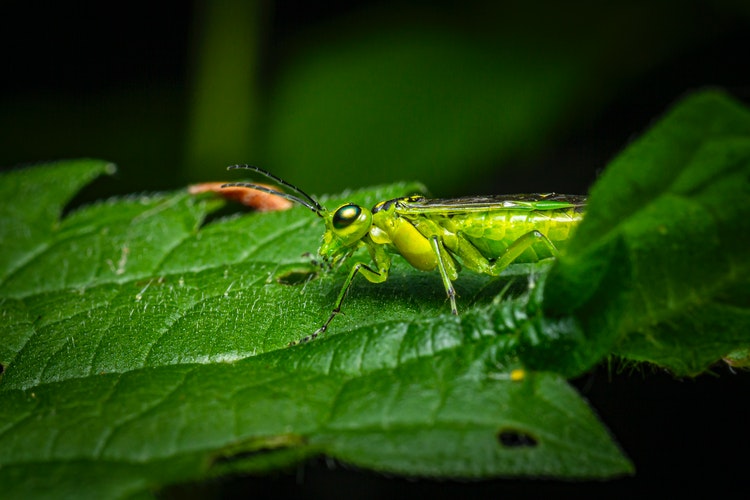No landscaper needs to see bugs unleashing devastation on a bed brimming with aging produce. Fortunately, it is conceivable to fend unwanted guests off. Since certain pesticides can hurt your plants’ beneficial bugs, attempt this simple control quantifies first before depending on the solid stuff.
It presumably will not amaze most vegetable landscapers that insects outnumber people many times over. While a few bugs can help specific plants, gardeners are acquainted with numerous little crawly critters’ demolition.
Before you can handle garden bugs, however, you need to understand what you are managing. That is the cause we have gathered this manual for the main 11 most common – and generally dangerous – garden insects.
Let’s figure out the most destructive garden insects
1. Cutworms
Cutworms are fatty, one-inch-prolonged moth hatchlings that cover up underneath leaves or inside the top layer of soil throughout the day and feed on plants around the evening. They commonly attack stems, the initial segment of a plant they experience, so if a recently planted seedling has been felled like a tree in the woodland, that indicates cutworms.
2. Cabbage Maggot
Cabbage Maggot sticks to cabbage-family yields, particularly Chinese cabbages, and live all through North America. The maggot’s tunnel in roots, executing plants straight forwardly or by making passages for disease beings.
3. Aphids
These 1/6-inch pear-molded creatures pierce plant tissues to pull out sap. Influenced plants regularly structure puckered leaves, show hindered growth and can pass on without treatment. Besides, the honeydew (a sweet, tacky substance discharged by aphids) promotes a dingy shape and attracts ants, which protect the aphids since they need the honeydew.
4. Japanese Beetles
Grown-up insects are metallic blue-green and bronze, 1/2-inch scarabs. Larvae are fatty, white grubs with brown colored heads. Insects skeletonize leaves and bite blossoms. Grubs feed on the underlying foundations of grass and different plants.
5. Caterpillars
Caterpillars are delicate, divided hatchlings with the distinct, harder head container with six legs in the front and sturdy bogus legs on back sections. They can be found on numerous leafy foods, ornamentals, and overhanging trees. Caterpillars bite on leaves or along edges; some tunnel into fruits.
6. Tomato Worms
If you have ever developed tomatoes, you have presumably encountered some good and bad times: tasty, ready, brilliant red tomatoes from one perspective, and the pitiful sight of a plant canvassed in insects. Bugs love tomatoes, and the fruit worm and pinworm are no particular case. These little worms develop to an inch or so long; however, they can unleash destruction on your plants.
7. Scales
You are destined to see grown-up female scale creepy crawlies, which appear as though they knock on plant stems, leaves, or natural fruit. Males are little flying creepy crawlies, while larvae are small, delicate, slithering bugs. Scale bugs suck plant sap, debilitating plants and making foliage turn yellow and drop off. Also, honeydew is kept on leaves and organic fruit. It is unattractive and can cultivate disease.
8. Colorado Potato Beetle
Adults are yellow-orange creepy crawlies with ten dark stripes on wing covers. They are found on potatoes, tomatoes, eggplant, cherry tomatoes, and petunias all through North America. These insects defoliate plants, diminishing yields or even murdering young plants.
9. Vegetable Leafminer
Vegetable Leafminers are restricted to the hotter area of the U.S., which implies we have a lot of them here in South Carolina. They are equipped for swarming a larger number of vegetables than you can tally squash, tobacco, turnip, potato, cotton, radish, cabbage, tomato, bean, okra, spinach, watermelon, beet, and many more.
10. Slugs
Slugs look slimy, soft-bodied mollusks, about an inch long and either gray colored or brown in shading. They stow away out in obscure spots during the day and do a large portion of their taking care of around evening time. They will eat pretty much any nursery plant, leaving unattractive openings in the foliage. While normal in soggy, moist atmospheres, they are more common if the climate has been rainy.
11. Mexican Bean Beetle
Adults -ups are oval-shaped, yellow-brownish colored, 1/4-inch scarabs with 16 dark spots on wing covers, while hatchlings are fat, dark yellow grubs with, since quite a while ago, extended spines. They are found on cowpeas, lima beans, snap beans, soybeans in many states east of the Mississippi River, just as parts of Arizona, Texas, Colorado, Nebraska, and Utah.
How to get rid of these garden insects?
Luckily, nature offers a lot of non-toxic ways to debilitate and oversee detrimental creepy crawlies. The accompanying seven steps can assist a landscaper with decreasing bug issues without harmful synthetics. Keep in mind: Prevention is the first and best line of attack.
I) Build Healthy Soil
Soil supplies the supplements, water, oxygen, and root uphold that plants need to flourish. Research reveals that the better the soil, the better plants can withstand bug attacks. Building stable, ripe, living soil is the primary method to prevent bug issues.
II) Choose Resistant Varieties
This is a simple tip for preventing garden bugs: Choose plant varieties that are generally resistant to bugs. Seed inventories list assortments that are known for resistance.
III) Attract Beneficial Predators
Keep in mind, not all bugs are terrible. Numerous real assist plants with developing pollinating, breaking down waste, and eating up bugs. Try to realize which bugs advantage your plants and which can turn into a problem.
IV) Plant in the Right Place
Save plants that need full sun for full sun territories. Similarly, plant crops as per water needs. If a yield requires more water to remain healthy, grow it in a zone that stays moist longer. So, you can plant them in an enclosed location like farm buildings.
V) Monitor the Garden
Indeed, every nursery worker will impart some gather to bugs. Indeed, even in a nursery with stable soil humming with beneficial bugs, it is smart to intently screen crops for pest harm. Be sure to inspect the foundations of leaves, where bugs cover up and leave egg sacs.
VI) Rotate Crops
Yield rotation confuses bugs, diminishes their concentration in explicit areas, and causes you to oversee soil fruitfulness. Leave a few years between planting individuals from a similar harvest family in a specific place.
VII) Use Floating Row Covers
Summer-weight line cover permits water and light to enter while keeping vermin out. You may have to utilize floating row cover over young plants until they are set up. Overload the sides with bulky items like rocks or bricks.
I really hope that these insect controlling tips will help you out to maintain a healthy garden.




